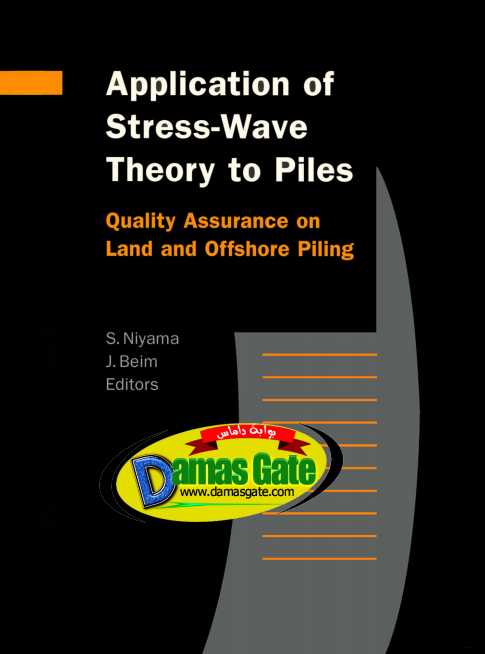Application of Stress-Wave Theory to Piles - Quality Assurance on Land and Offshore Piling

Preface
The application of dynamic testing based on the wave equation theory was first introduced in Brazil in 198 1. Differently from other countries, its first application was on offshore piling. At that time, a great number of jacket type platforms began to be installed in the country by the Brazilian Oil Company, in waters with depths varying from 50 to 250 meters. The use of this technique also on land job sites experimented a continuous growth since then. In 1989, low strain integrity testing was introduced. In 1994, a code on the dynamic load testing of piles was issued by the Brazilian Technical Standards Association - ABNT A couple of years later, in 1996, the same ABNT edited a revision of the Standard for Design and Execution of Foundations, which now accepts the use of dynamic load testing as one of the alternatives for bearing capacity evaluation. In the case of driven piles, it also allows for a reduction of the safety factor, from the usual value of 2 down to 1.6, provided that dynamic testing is performed on at least 3% of the piles on the job site, and that it is applied since the beginning of the piling.
Download
*

Preface
The application of dynamic testing based on the wave equation theory was first introduced in Brazil in 198 1. Differently from other countries, its first application was on offshore piling. At that time, a great number of jacket type platforms began to be installed in the country by the Brazilian Oil Company, in waters with depths varying from 50 to 250 meters. The use of this technique also on land job sites experimented a continuous growth since then. In 1989, low strain integrity testing was introduced. In 1994, a code on the dynamic load testing of piles was issued by the Brazilian Technical Standards Association - ABNT A couple of years later, in 1996, the same ABNT edited a revision of the Standard for Design and Execution of Foundations, which now accepts the use of dynamic load testing as one of the alternatives for bearing capacity evaluation. In the case of driven piles, it also allows for a reduction of the safety factor, from the usual value of 2 down to 1.6, provided that dynamic testing is performed on at least 3% of the piles on the job site, and that it is applied since the beginning of the piling.
Download
*